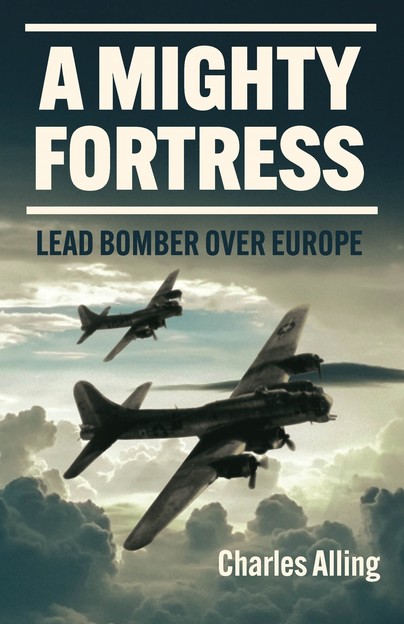Casemate Illustrated brings military history to life with rich visuals and detailed illustrations. Perfect for history buffs and modeling enthusiasts, these books offer an engaging way to learn about various conflicts.

Format: Paperback
Pages: 128
ISBN: 9781636243252
Pub Date: 05 Jul 2023
Illustrations: B/W & colour
Description:
Animals, especially dogs, have served in all the wars of men since time immemorial. During World War II, most combatant nations employed dogs on the battlefield in a number of ways, including searching for injured men or downed airmen, detecting mines, carrying messages between units or dragging communications wires, particularly in difficult terrain, transporting supplies, and sentry duty.This illustrated book is an overview of how dogs were trained and used in WWII by different countries, including the stories of some of the individual animals that served.
It also summarises the various programs established to take care of the animals and send them home after the war.

Format: Paperback
Pages: 128
ISBN: 9781636242385
Pub Date: 05 Jul 2023
Illustrations: B/W illustrations
Description:
When the Soviet Union invaded Finland in late 1939, what transpired was a true “David and Goliath” conflict. When Finland refused a number of Soviet demands, including the ceding of substantial border territories ostensibly to enable the Soviets to protect Leningrad, the Soviets responded by launching an invasion. The invasion involved a large Soviet army, with several thousand tanks, and a large air force.
But to the world's surprise the Finnish Army - many of them reservists without proper uniforms and limited ammunition - and Air Force battled overwhelming odds, and managed to resist Russian attacks for over two months, inflicting serious losses. Geography played its part as much of the Finnish-Soviet border was impassable, meaning that Soviet numerical superiority was of less import. Operating in the winter, with temperatures ranging as low as -43F, the Finns’ determined resistance won them international reputation. Although hostilities finally ended in a peace treaty that saw Finland cede 9% of its territory, Soviet losses had been heavy, and Finland retained its sovereignty. This fully illustrated text will cover the forces involved and all stages of the Winter War.

Format: Paperback
Pages: 128
ISBN: 9781636242644
Pub Date: 31 May 2023
Illustrations: B/W
Description:
The British Army in North America conducted two campaigns in 1777. John Burgoyne led one army south from Canada to seize control of the Lake Champlain-Hudson River corridor resulting in the battle of Saratoga. Burgoyne’s defeat led to that army’s capture.
Rather than assist Burgoyne’s campaign, William Howe led his army from New York City on the Philadelphia campaign. Although Howe captured Philadelphia, the events of 1777 led to the French Alliance and ultimately American victory in American Revolution. This fully illustrated account of the Philadelphia campaign puts the battles into context and explains the importance of the campaign to the outcome of the war.

Format: Paperback
Pages: 128
ISBN: 9781636242668
Pub Date: 28 May 2023
Illustrations: B/W
Description:
By the late summer of 1862, it appeared as though the United States would be permanently split in two, and by the beginning of September, General Robert E. Lee's Army of Northern Virginia was on the doorstep of Washington, D.C.
Panicked and defeated Federal soldiers huddled behind the capital’s defenses. Rather than attacking the city, Lee turned his attention north into Maryland, seeking a decisive battlefield victory to influence public opinion at home and diplomatic opinion overseas. Major General George B. McClellan led the reorganised Army of the Potomac into the state to meet Lee. Over a span of 18 days, the two armies fought four significant battles, including the climactic engagement along Antietam Creek outside Sharpsburg on September 17, 1862. The battle there still holds the distinction as the bloodiest single day in American military history. Forced from Maryland, Lee withdrew into Virginia, leaving President Abraham Lincoln free to follow up this strategic victory with the preliminary Emancipation Proclamation, a measure that changed the nature of the American Civil War. Copious illustrations and maps paired with a detailed text, this account of the Maryland campaign will have wide appeal.

Format: Paperback
Pages: 128
ISBN: 9781636243146
Pub Date: 28 Feb 2023
Illustrations: B/W and colour
Description:
Formed in 1943 with the express purpose of blocking the forthcoming Allied invasion in the West, the 12th SS Panzer Division Hitlerjugend carved out a reputation as one of the Wehrmacht’s foremost panzer divisions, as witnessed by its tenacious defense of Caen following the Allied invasion of Normandy. The British Operation Goodwood against Caen in July 1944 was followed by Totalize in August, which bypassed Caen and attacked the Hitlerjugend positions. Within a week thousands of German troops were encircled in the Falaise Pocket.
Around ten thousand Hitlerjugend soldiers escaped piecemeal, regrouping to fight in the battles along the Maas and the ill-fated Ardennes offensive of December 1944. Deployed to Hungary in 1945 to stem the Red Army advance, the division fought against overwhelming odds until the final battles in Austria, on Reich soil, in late April 1945. There the soldiers of the Hitlerjugend, despite the desperate situation and the superiority of the enemy, managed to achieve local success and launch desperate counterattacks even into the last weeks of the war. Packed with photographs, maps and profiles, this Casemate Illustrated title follows the actions of the 12th SS Panzer Division throughout its existence.

Format: Paperback
Pages: 128
ISBN: 9781636242620
Pub Date: 15 Feb 2023
Illustrations: B/W
Description:
Following the destruction of Sixth Army at Stalingrad in February 1943, Army Group South slowly withdrew westwards, using the Dnieper as a fortified position. In late 1943, the Soviet 1st, 2nd, 3rd, and 4th Ukrainian Front launched a strategic offensive against the German Army Group South A – one of the largest operations of the war. In May 1944, Red Army troops defeated Army Group South and Army Group A on the Dnieper.
Many thousands of German troops evacuated across the Black Sea. In July, troops of the 1st Ukrainian Front launched an operation into the Crimea. The offensive coincided with other Red Army operations further north, including the Lublin-Brest Offensive – part of Operation Bagration. Slowly and inexorably, the powerful Russian attacks forced the tattered German army group to retreat hundreds of miles west, into Eastern Poland and Romania. Here German forces defended their positions and built defences in Hungary and Austria to try and slow down the overwhelming might of the Red Army. There, the Germans would fight a series of desperate battles until the remnants surrendered in early May 1945.Drawing on rare and previously unpublished images accompanied by detailed captions and text, the book gives a fascinating analysis of the destruction of Army Group South in southern Russia between 1944 and 1945.

Format: Paperback
Pages: 240
ISBN: 9781636242217
Pub Date: 15 Nov 2022
Illustrations: 50 photographs
Description:
A Mighty Fortress is the personal account of the Captain and crew of a lead bomber in the enormous formation raids made by the 8th Airforce during the last few months of World War II. It is an extraordinary tale of heroism and bravery on the part of the whole crew of just one B17 amongst hundreds – but the one B17 that meant most to them. Flying a total of 27 missions before the war came to an end, Alling tells, with great restraint, the story of what it was like to be there, over the skies of enemy territory, constantly on the lookout for enemy fighters.

Format: Paperback
Pages: 128
ISBN: 9781636241685
Pub Date: 15 Sep 2022
Illustrations: 150 photographs and maps
Description:
Created in 1943 from members of the Hitler Youth born in 1926, the division was attached to I SS Panzer Corps in March 1944 and transferred to Normandy. Based around Caen, it was intended to repel a possible and expected invasion from the sea. When the invasion came in June, it was one of the two closest panzer divisions to the landing beaches.
The defensive battles that took place in Normandy, particularly the four battles around the city of Caen, saw the young soldiers of the Hitlerjugend demonstrate determined resistance, conceding only due to being greatly outnumbered. After the battles fought in Normandy, the division was withdrawn first to the Franco-Belgian border, where it was engaged in hard defensive fighting and then to Germany for reorganisation. Other difficult and demanding battles followed during the offensive in the Ardennes, on the Bastogne front, in Hungary and finally the last battles fought in Austria, on the sacred ground of the Reich, where the soldiers of the Hitlerjugend, despite the desperate situation and the superiority of the enemy, managed to achieve local success and launch desperate counterattacks even into the last weeks of the war, in the name and in defense of their homeland. Packed with photographs, maps and profiles, this Casemate Illustrated follows the actions of the 12th SS Panzer Division throughout its existence.

Format: Paperback
Pages: 128
ISBN: 9781636241067
Pub Date: 15 Sep 2022
Illustrations: Fully illustrated
Description:
This is a compelling account of the German defense of the Baltic States of Estonia, Latvia and Lithuania. Against overwhelming Soviet forces the book shows how the German Army Group North was driven across the Baltics from Leningrad and fought a number isolated battles including the defense of Narva, Memel and the Kurland pocket. The book outlines in dramatic detail how Hitler forbade his troops to withdraw, ordering them to follow his Halt Order Decree and fight to the death.
However, exhausted and demoralized by continuous Soviet assaults, Army Group North became cut-off and isolated, fighting fanatically to hold the capital cities of Tallin, Vilnius and Riga. What followed were German forces fighting to the death in the last few small pockets of land surrounding three ports: Libau in Kurland, Pillau in East Prussia and Danzig at the mouth of the River Vistula. In the Kurland, German divisions became surrounded and fought a vicious defense until May 1945. Drawing on a host of rare and unpublished photographs accompanied by in-depth captions and text, the book provides an absorbing read of the Red Army's conquering of the Baltics.

Format: Hardback
Pages: 160
ISBN: 9781636242132
Pub Date: 15 Jun 2022
Series: Casemate Illustrated Special
Illustrations: Fully illustrated
Description:
In 1940, the U.S. Army began to standardize the production of vehicles it required to fight a modern war – including support and medical vehicles.
The first deliveries of the ¾-ton Dodge WC54 ambulance arrived in 1942. Built by Chrysler, and utilising the same chassis and engine as the entire Dodge WC series, the WC54 ambulance has specific features specific to use for the rescue and transport of injured soldiers. In all, more than 26,000 Dodge WC54 vehicles would be built during the war. Used by the U.

Format: Hardback
Pages: 160
ISBN: 9781636241609
Pub Date: 15 Jun 2022
Series: Casemate Illustrated Special
Illustrations: 250 illustrations
Description:
Between 1940 and 1945, the Diamond T Motor Car Company supplied just over 50,000 vehicles to the US military, and also to the Allies. Of these, just over 30,000 were heavy 4-ton 6x6 trucks of varying types: cargo, tow truck, pontoon carrier, engineer, and cartographic. The 'Diamond' would serve in all theatres of operations, wherever its robustness and reliability were necessary to complete the mission.
Due to its expertise, Diamond T also produced the famous half-track, with more than 10,000 manufactured. All of these models are described in this book by Didier Andres, an expert in the subject. It is illustrated throughout using archival and period photographs and diagrams.

Format: Hardback
Pages: 288
ISBN: 9781636240985
Pub Date: 15 Apr 2022
Series: Casemate Illustrated Special
Illustrations: 100 photographs
Description:
Thousands of volumes have been published about World War II but relatively little attention has been given to the sniper. Drawing from memoirs, government documents and interviews, this Casemate Illustrated title incorporates eyewitness accounts to weave a comprehensive narrative of snipers in World War II. While certain common traits were shared among belligerents, each had its unique methodology for selecting and training snipers and, as casualties were high, their replacements.
Drawn from hunters, competitive shooters, natural marksmen, outdoorsmen, city dwellers, farmers and veteran soldiers, they fought to assert local battlefield dominance and instill among their enemy a paralyzing fear. Sometimes admired and other times reviled by their own comrades because of the retaliation they drew, they were always too few in number. Their battlefield role, their victories and their defeats are retold here from neglected or forgotten sources. The scope of World War II Snipers is extensive, with three chapters each on the major theatres of the war including Western Europe, Eastern Europe and the Pacific. These are supported by a lengthy chapter on the sniper rifles used by the snipers and their equipment. Finally, the last chapter discusses many overlooked or ignored subjects not raised by other researchers and provides much food for thought. The bibliography is a valuable resource to future researchers and writers. For the long-range rifle shooter and today's snipers, the lessons of the past are as relevant today as they were when learned and practiced in World War II.

Format: Paperback
Pages: 128
ISBN: 9781636240329
Pub Date: 15 Jan 2022
Illustrations: 150 photographs and illustration
Description:
September 1944: With the Allies closing in on the Rhine, Adolf Hitler orders a counterattack on General Patton's Third Army in France. Near the small town of Arracourt, France, elements of the US 4th Armored Division met the grizzled veterans of the 5th Panzer Army in combat. Atop their M4 Shermans, American tank crews squared off against the technologically superior Mark V Panther tanks of the Wermacht.
Yet through a combination of superior tactics, leadership, teamwork, and small-unit initiative, the outnumbered American forces won a decisive victory against the 5th Panzer Army. Indeed, of the 262 tanks and mobile assault guns fielded by German forces, 200 were damaged or destroyed by enemy fire. The Americans, by contrast, lost only 48 tanks. Following the collapse of the German counterattack at Arracourt, General Patton's Third Army found itself within striking distance of the Third Reich's borderlands. The battle of Arracourt was the US Army's largest tank battle until the Ardennes Offensive in December 1944. It helped pave the way for the final Allied assault into Germany, and showed how tactical ingenuity and adaptive leadership can overcome and an enemy's superior size or technological strength.

Format: Hardback
Pages: 160
ISBN: 9781636240640
Pub Date: 10 Dec 2021
Series: Casemate Illustrated Special
Illustrations: Color
Description:
A comprehensive and fully illustrated account of all the vehicles needed to move, use, and maintain communications equipment vital to the success of the U.S. Army during World War II, including trucks, workshop trucks, vans and trailers all designed by the Signal Corps, described in technical detail and illustrated by hundreds of period photos.
The Signal Corps was at the forefront of the technological development of communications throughout World War II. Tasked with coordinating all American military activities, the Signal Corps initially had to rely on a communications landline network covering some 1 300 000 km. This was soon overtaken by radio communications. however adaptation remained a priority within the US Army Signal Corps for when landline networks were unavailable or radio silence had to be observed.Almost every large piece of Signal Corps equipment required wheeled transport, and over a hundred vehicles and trailers would be specially designed, many associated with one particular radio or radar installation. This comprehensive and fully illustrated account covers radar and radio vehicles, plus specialised vehicles such as telephone repair trucks, mobile telephone switchboards and homing pigeon units, all described in technical detail and illustrated by hundreds of period photos.

Format: Hardback
Pages: 192
ISBN: 9781636240909
Pub Date: 10 Dec 2021
Series: Casemate Illustrated Special
Illustrations: 150 photographs and illustration
Description:
This book provides an overview of the victory markings painted on the fins and rudders of the planes of the German day fighter and night fighter aircraft between 1939 and 1945, and demonstrates how these were applied in reality through the profiles of nineteen pilots, including some of the most emblematic pilots of the Luftwaffe: Hans Troitzsch, Johannes Gentzen, Frank Liesendahl, Wilhelm Balthasar, Otto Bertram, Joachim Müncheberg, Karl-Heinz Koch, Kurt “Kuddel” Ubben, Felix-Maria Brandis, "Fiffi" Stahlschmidt, Franz-Josef Beerenbrock, Heinrich Setz, Walter "Gulle" Oesau, Max-Hellmuth Ostermann, Heinrich Bartels, "Fritz" Dinger, Martin Drewes, Egmont zur Lippe-Weissenfeld and Ludwig Meister.

Format: Hardback
Pages: 224
ISBN: 9781636240862
Pub Date: 10 Dec 2021
Series: Casemate Illustrated Special
Illustrations: Over 200 photographs, diagrams and artwork
Description:
When HMS Dreadnought was commissioned into the Royal Navy in 1906 this revolutionary new class of big-gun iron-clad warship immediately changed the face of naval warfare, rendering all other battleships worldwide obsolete. The Admiralty realised that as soon as the ship was revealed to the global naval community Britain would be a in race to stay ahead, and so the first dreadnoughts were built in record time. While there were those who regarded the vessel as a triumphant revolution in naval design, the dreadnought initially had its critics, including those who thought its slower, heavier guns left it vulnerable to the secondary armament of other warships.
Nevertheless, other countries, notably Germany, and the United States soon began to lay down dreadnoughts. The culmination of this arms race would be the confrontation of the British and German fleets at the Battle of Jutland in May 1916 - the greatest clash of naval firepower in history. This book gives detailed insights into the design, operation and combat history of these incredible vessels.
















